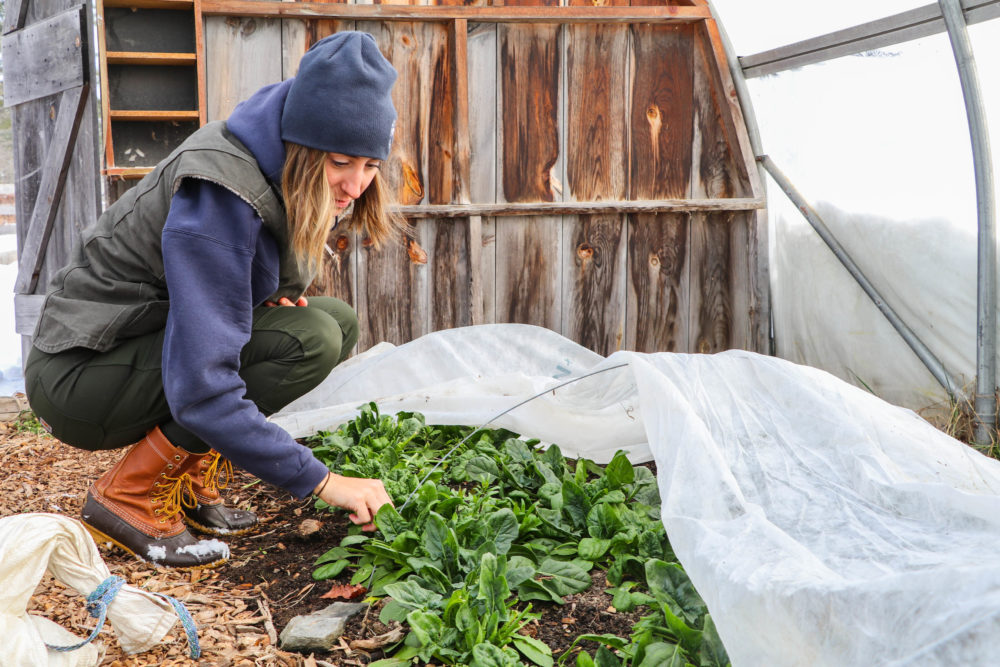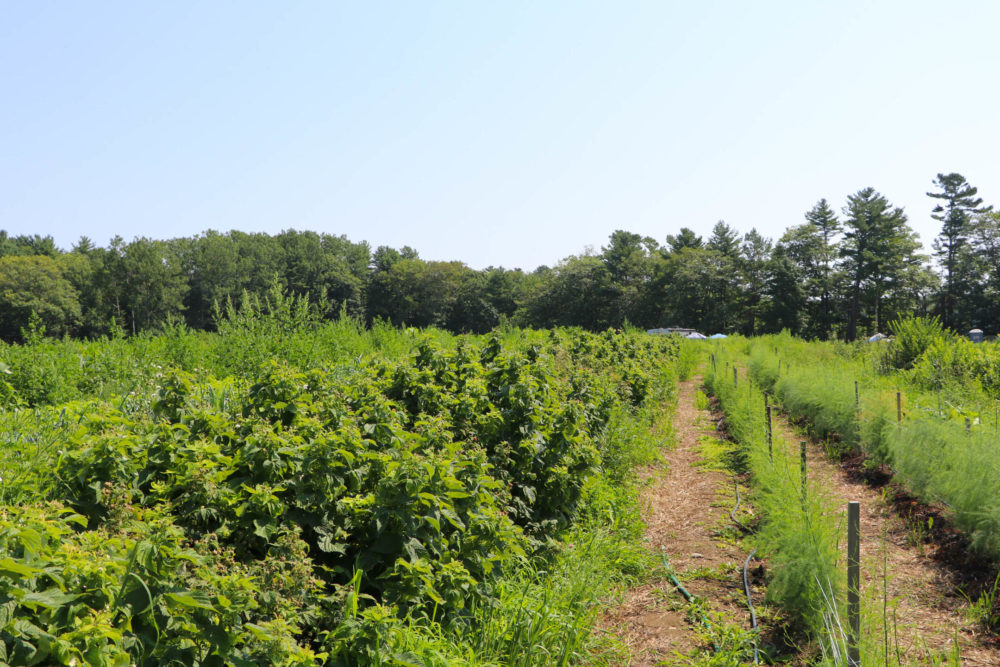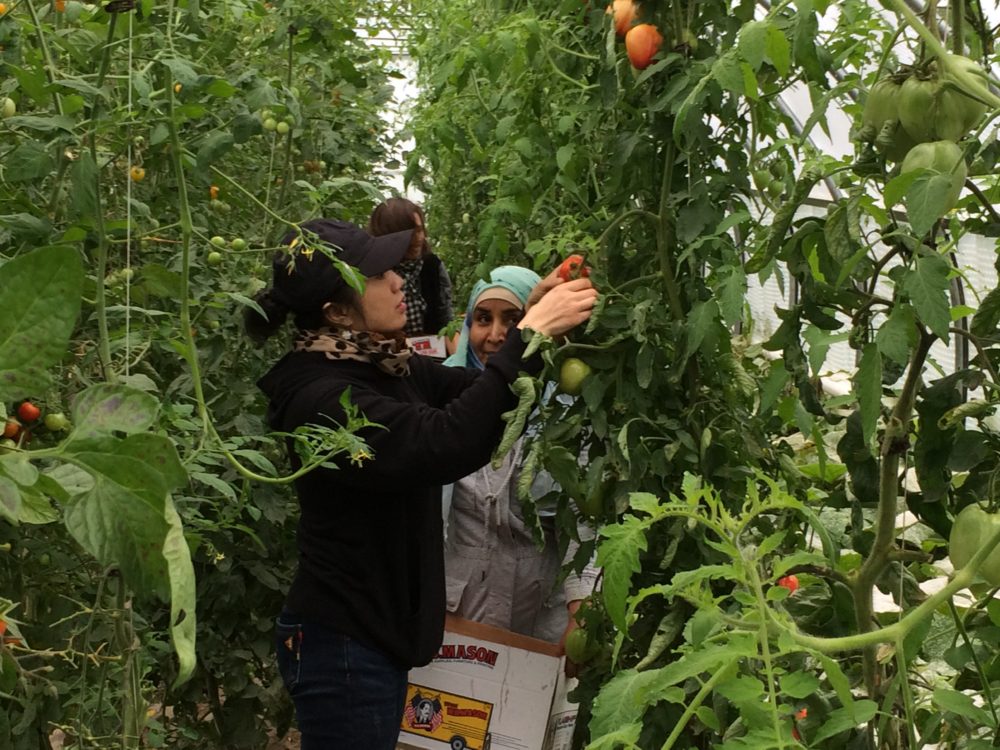When you think back through what you accomplished in the past year, how your life may have changed or how you may have changed, it gives you an idea of what you want for yourself in the new year. January is all about this time of reflection and setting intentions for the months ahead. You may not set resolutions, but the goal is to continue to improve over time.
The same is true for our fruit and vegetable production. We are constantly analyzing what worked and it what didn’t. New greenhouses get added, the plots expand, and climate patterns can be unpredictable. With farming there is constant experimentation, a sort of trial and error that pushes us to improve with each season. We want to not only achieve high yields for our crops, but we also want our customers to be happy and to grow in ways that promote healthy and fertile soils.
It is also important for our interns to talk through organic growing strategies because it contributes to the farmer training experience. It creates a collaborative learning environment for them to deepen their understanding of operations and how dependent success is on consumer demand (sales), pest management, weather, and a number of other variables.

Sarah Martel had her first immersive farming experience as an intern here in the summer of 2018. Now she is in the unique position of returning for a second growing season, this time in a more hands-on leadership role. Here are some of the ways she and the production team plan to adapt for the 2019 season and why:
Rotating crop locations
Crop rotation is essential for soil health and fertility because growing the same crop in the same location for several years in a row depletes the soil of rich nutrients. A crop that heavily feeds on one or more nutrients from the soil should ideally be followed by a different crop that returns the nutrient to the soil or draws a different ratio of nutrients. Rotating crops also helps to control weeds, pests, and diseases that can build up in one area by interrupting their life cycles and taking away a consistent food source. Last year, our brassica crops (broccoli, kale, and cauliflower, to name a few) were hit hard by pests—flea beetles and most of all, groundhogs!—in the West Bay plot. Instead, this year we’ll plant the brassicas in a newly developed plot farther away, replacing their former location with a new strawberry patch that will be more resistant to the beetles.

More salad greens
This summer we plan to grow a variety of mixed salad greens to meet the growing market demand. We are going to be more strategic about planting location, both for crop rotation reasons and to streamline the amount of time it takes us to harvest. We’ve settled on dedicating a small unheated greenhouse in the ed garden for the greens this year. In 2018, it had fondly become referred to as the “pepper house”, where we grew a variety of peppers and Thai basil. We’ll save a lot of time by having all the greens in one location, but we might have to change the name “pepper house” now!

Pizza toppings in the greenhouse
Last year our 75-foot high tunnel greenhouse became a haven for tall tomato plants. We had an abundance and channeled them through CSA baskets, the Farm Store, and value-added products like salsa and sauce. We learned, however, that instead of the paste tomatoes that we had the most of, consumers are wanting more cherry tomatoes and slicer tomatoes. This year we’ll use the space to plant more of these varieties. Basil will thrive interplanted with the tomato plants, and we’ll also move eggplant and peppers into this same space for crop rotation purposes. Last summer, we successfully avoided pest issues with the eggplants by growing them in the greenhouse. We’ll improve our yields even further this summer by growing them in another greenhouse (yes, crop rotation!) and using pruning and trellising strategies to encourage additional fruiting.

Gherkins to the north
Last summer, we experimented with growing Mexican sour gherkins, a small cucumber-like fruit that we had yet to grow before. They grew high up a trellis on the south side of our greenhouse, and while they thrived, it shaded other crops on the northern side because it blocked the sun. This year we plan to move the gherkins to the north side of the high roller to work with the sunlight rather than against it!

Of course, as farmers we are always going to face limitations and challenges depending on our circumstances. Our biggest driver is that we adapt as much as we are able to and are audaciously innovative to solve these challenges. For example, it was only two years ago that we added the greenhouses that allow us to grow crops year-round. All of these greenhouses are unheated, so we are limited in what can be grown, but we focus on cold-hardy crops like spinach and carrots and “over wintering” crops like leeks and onions to harvest in the spring.
The location of these greenhouses is also something we’ve had to learn to accommodate. The land is low-lying with poor drainage, but we are cognizant of this and aptly check after a heavy bout of rain or snow. We also built the permanent row beds on the side with the higher grade, so our crops have been spared any direct issues related to drainage.
Sarah is determined to have a successful growing season with this tough-grit mindset. She’ll oversee the 45-foot greenhouse and former “pepper house”, which includes making decisions regarding crop selection, planting, maintenance (weeding, pruning, etc.), and harvesting. “I believe a lot of growth occurs through trial and error,” she says. “So it’s really exciting to have more responsibility and autonomy as my internship progresses.” Right now—like with your new year’s resolutions— it’s all about the planning, reflection and setting ambitions for the season to come.
← Back to Blog